“But where do you get your protein?” must rank as the number-one-most-frequently-asked question to vegans. What the question tells us is that so many people associate protein with eating animals. Therefore, they assume it is impossible to get non-meat protein. However, that is definitely not the case, as this ultimate guide to plant-based protein proves. Here we give you our rundown of the top high-protein vegan foods. So you’ll have the definitive answer to the “protein question” the next two hundred times that you’re asked it….
We break down the list of high protein vegan foods in various categories, including meat substitutes, nuts, and veggies high in protein. But first, let’s take a quick look at what protein is and the role that it plays in ensuring our bodies’ function properly.
What is protein?
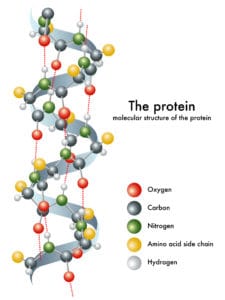
Protein is one of the three macronutrients that our bodies need (the other two are fat and carbohydrates). They are called macronutrients because they are the nutrients that we need the most of (compared to the macronutrients, like vitamins and minerals, that we only need in relatively small quantities).
Basically, every body part contains protein, from the hairs on your head to the bones of your skeleton. There are at least 10,000 different proteins that power the chemical reactions that keep your body functioning properly. Overall, protein makes up about 17% of your body’s total weight. It is the main component of our muscles, skin, heart, brains, eyes, nails, and hair. It also plays an essential role in our immune systems, equipping them with the strength that they need to fight off infections. Plus, it metabolizes fat, regulates blood sugar, and contributes to our energy levels.
Protein itself is constructed from twenty-two amino acids. Our bodies don’t store these amino acids, so they need to either make them or get them from the food. There are nine “essential amino acids” that can only come from food. They are histidine, isoleucine, leucine, lysine, methionine, phenylalanine, threonine, tryptophan, and valine.
What is a complete protein?
A complete protein is one that contains all the nine essential amino acids listed above. Foods from animals are generally more likely to be complete proteins than plant-based foods. However, there are certain plant-based foods that are complete proteins, including tofu, hemp and chia seeds, and quinoa (see below for more details).
Also, it’s very important to note that you don’t need to get complete protein from one food alone. Eating different foods in combination that combine different essential amino acids can easily create a complete protein. There are lots of vegan ways to, very simply, put together complete proteins in common meals. For example,
How much protein do you need?
The United States recommends that adults should consume 0.8 grams of protein daily for every kilogram of body weight. By which calculation the average man should eat around 56 grams of protein per day and the average woman around 46 grams. Obviously, people who weigh less than average also require less protein.
Equally important in health terms as the amount of protein is the type of protein that you are eating. Red meat, for example, is abundant in protein but also associated with lots of negative health outcomes, in terms of increased risk of heart disease, stroke, diabetes, and cancer.
Despite non-vegans’ concerns about your protein intake, it is very rare for anybody in developed countries to be protein deficient. That’s because there are so many sources of protein available in such a wide range of foods, including plant-based foods. Let’s take a look now at some of the top vegan protein food options.
What are the best vegan protein foods?
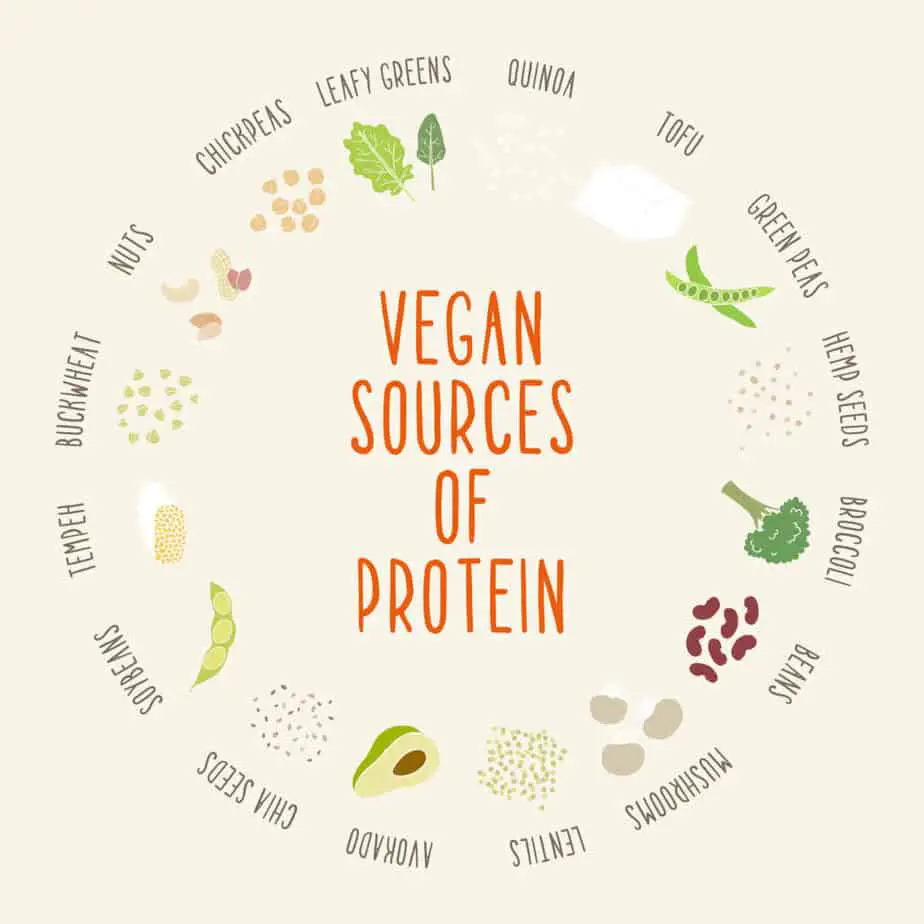
Below, we summarize some of the top options for getting protein from vegan foods in various categories: meat substitutes (tofu, tempeh, and seitan), beans, nuts and seeds, vegetables and fruits, and others.
Meat substitutes high in protein (tofu, tempeh, and seitan)
The classic substitute for meat when looking to add protein to a vegan dish, tofu is made from curdled soy milk that has been formed into a solid block. One of the many advantages of tofu is its great versatility in terms of the range of different dishes that it can be used in. Plus, just 100 grams of tofu contains 8 grams of protein. Tofu is particularly prized as a vegan protein option because it is a complete protein, containing all nine of the essential amino acids.
An increasingly popular soya option is tempeh, a form of fermented tofu from Indonesia. Tempeh is both healthier and, in many people’s opinion, tastier than regular tofu. As well as its use in Asian dishes, tempeh is increasingly popular as a vegan bacon substitute for sandwiches and burgers. Tempeh also packs much more of a protein punch than its plainer cousin, amounting to an awesome 19 grams of protein per 100 grams of tempeh.
The typical meat substitute with the highest quantity of protein per 100 grams is seitan. Derived from wheat gluten, seitan is the classic mock meat used for many centuries in Asian cuisine as a means of creating dishes that have the flavor and texture of meat. It contains a whopping 25 grams of protein per 100 grams.
Beans and legumes high in protein
Beans and legumes are some of the richest plant-based sources of protein because they typically have 21-25% protein by weight. That equates to somewhere between 6 to 9 grams of protein per half-cup, which is about the same amount as an egg or around about an ounce of beef, fish, or chicken. Meat may contain more protein than beans and legumes, but it is generally less healthy because it comes accompanied by saturated fat and lacks fiber.
According to nutritionist Rania Batayneh, “Per serving size, beans and lentils are one of the top plant-based proteins, coming up just behind tofu and tempeh in terms of protein content but ahead of nuts, seeds, quinoa, and vegetables.”
The top five beans for protein content are:
- Great northern beans – a highly versatile white bean that works well in salads, white chilis, soups, and smoothies. They are top of the list of beans when it comes to protein with an impressive 9.7 grams per ½ cup.
- Lentils – they’re a vegetarian and vegan staple for a reason, with 9 grams of protein and 8 grams of fiber per half-cup. Lentils’ versatility has made them a favorite in many world cuisines, from Indian dahls to Turkish soups. They also work well in salads and as meat substitutes.
- Split peas – split peas are just green peas that have been processed differently, having been peeled, dried, and skinned. The extra processing makes them more compact than green peas, meaning that they pack an even higher punch of protein per ounce: 8.2 grams per half-cup.
- Black beans – another readily available, versatile, inexpensive, and protein-rich bean. A staple of Mexican and Central American cuisine, black beans include an impressive 7.6 grams of protein per half-cup (120 grams).
- Black-eyed peas – coming in just behind black beans with 7.5 grams of protein per half-cup, black-eyed peas are another great option for vegan protein, plus they’re also rich in iron, vitamin B9, and folate.
Some of the other top bean options include chickpeas (garbanzo beans), a particular staple of Middle Eastern and Indian cuisine. At 6.3 grams per half-cup, their protein content is a little less than the other beans listed above but still impressive. They also have the advantage of great versatility, perfect for being blended into hummus, rolled up and deep-fried as falafel, cooked in a curry as chana masala, or simply mixed into a salad. They are also rich in potassium and magnesium.
An East Asian bean option that is also good for protein is the edamame bean, basically, an immature soybean that can be eaten as a snack or mixed into poke bowls. Edamame beans are rich in iron, folate, vitamins K and C, and calcium, as well as containing 5.6 grams of protein per half-cup.
Nuts and seeds high in protein
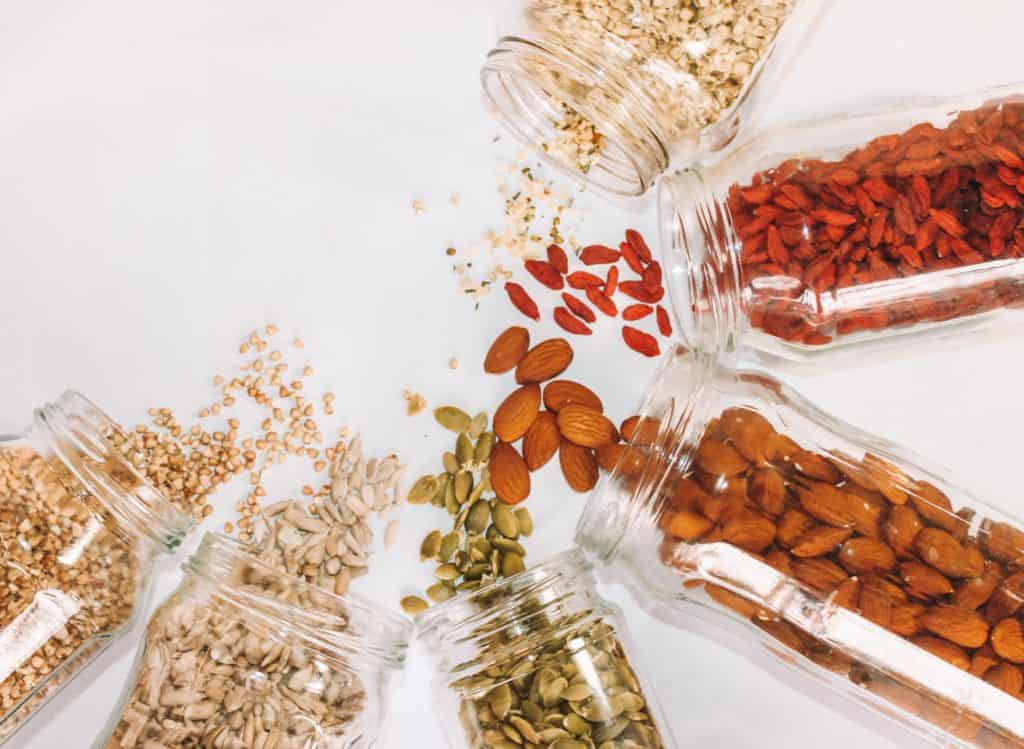
Power-packed with nutritional benefits, nuts and seeds are a great way for vegans to cram in essential vitamins, minerals, and macronutrients like protein. Here are the top five nuts and seeds to get if you’re looking to increase your protein intake:
- Hemp seeds – with an incredible 31.6 grams of protein per 100 grams, the humble hemp seed is the superstar of the vegan protein seeds and nuts list. What’s more, as noted above it is also one of the relatively few vegan sources of complete protein, meaning that it contains all nine of the essential amino acids. In other words, hemp seeds alone provide all amino acids without needing to be mixed with any other food. They go great sprinkled on salads, added to smoothies, or added as an ingredient to super-healthy energy or bliss balls.
- Pumpkin seeds – coming in not far behind the hemp seed, pumpkin seeds contain an impressive 29.8 grams of protein per 100 grams. Typically eaten roasted, they are also packed with antioxidants, zinc, magnesium, and healthy fats.
- Peanuts – the most common nut often gets a bad rep nutritionally compared to some of its nutty cousins with richer nutritional profiles. But when it comes to protein, the peanut is top of the class, with 24.4 grams of protein per 100 grams. NB – technically peanuts are a type of legume but we’ve classed them here as nuts because that’s how they are typically considered and used in a culinary sense.
- Almonds – well-loved amongst vegans for their delicious flavor and high levels of calcium, almonds are also protein-rich, coming in just behind the peanut with 21.3 grams per 100 grams of weight.
- Pistachios – one of the tastiest and most addictive nuts, dry-roasted pistachios also come with significant nutritional benefits, including 21.1 grams of protein for every 100 grams.
Also, worth a mention in the nuts and seeds category, Central American chia seeds have a little less protein than some of the other options listed above (16.5 grams per 100 grams). However, like hemp seeds, they are also a complete protein, containing all nine of the essential amino acids. Chia seeds also soak up water to take on a gel-like texture, making them a good substitute for baking and making chia pudding.
Sesame seeds are also high in protein and can be consumed either whole or crushed to form the paste called tahini, which is a very common ingredient in Middle Eastern cuisine. Sesame seeds contain 17 grams of protein per 100 grams.
Pretty much any of the commonly eaten nuts and seeds are also high in protein. Other particularly high-scoring options include sunflower seeds (19.3 grams per 100 grams), flax seeds (18.3 grams per 100 grams), cashews (15.3 grams per 100 grams), walnuts (15.2 grams per 100 grams), and hazelnuts (15 grams per 100 grams).
Grains high in protein
Proteins can be found in basically any food, and even the grains that you use in your meals can be excellent sources of protein. Especially if you’re prepared to get a little bit more adventurous than the standard grains like rice. Here are the top five grains for people looking to increase their protein content:
- Teff – originally from Ethiopia, the nutritional qualities of teff have been linked by some historians to the great strength of the Ethiopian kingdom (the only African country that was never colonized). Teff is a complete protein, containing all essential amino acids and around 5 grams of protein per cooked half cup. It is also gluten-free.
- Spelt – like teff, spelt belongs to the ancient grains category, which also includes barley, einkorn, and sorghum. It also contains around 5 grams of protein per cooked half cup. However, unlike teff, it is not gluten-free.
- Quinoa – Little known outside its native Peru for centuries, quinoa has become a health-food staple around the world in the 21st century. Its beneficial properties include a high level of protein for a grain, with around 4 grams of protein per half-cup. It’s also another example of a complete protein source.
- Amaranth – like quinoa, amaranth is classed as a “pseudo-cereal” because it doesn’t come from grass. Also, like the better-known quinoa, it is a complete protein containing around 4 grams of protein per half-cup.
- Wild rice – actually not rice at all, “wild rice” is a type of grass that is not processed to remove its bran. It contains 150% of the levels of protein of actual rice. Half a cooked cup of wild rice has 3.5 grams of protein plus decent amounts of fiber, B vitamins, and magnesium. However, caution should be taken with wild rice because of the potential for it to contain small quantities of the poison arsenic in its bran, which can lead to health problems over time.
Veggies and fruit high in protein
Vegetables are not generally as high in protein as the nuts, seeds, beans, and, even, grains mentioned above. However, if you are looking to include some relatively protein-rich vegetables in your meals, the following list includes the highest-protein common vegetable options (each of which contains around 2 to 2.5 grams of protein per half-cup cooked): broccoli, Brussels sprouts, asparagus, artichokes, spinach, potatoes, and sweet potatoes.
Similarly, although all fruits contain protein none of them are especially high. Nevertheless, fruits that typically have higher levels of protein (around 1.5-2 grams per half-cup) include bananas, blackberries, mulberries, nectarines, guava, and cherimoyas. Avocado is also a good fruit option for protein, with about 4 grams of the essential macronutrient per avocado.
Other vegan protein sources
There are some other great sources of protein for vegans that don’t fit neatly into the categories above, so we’ve listed some of the top ones below:
- Spirulina is a bluish-green algae that is believed to be one of the oldest lifeforms on Earth. It is also an increasingly popular health-food choice, often found in powdered form. Spirulina contains an incredible 57 grams of protein per 100 grams. Meaning that a mere two tablespoons of spirulina powder provide 8 grams of protein, plus lots of iron, thiamin, and copper.
- Nutritional yeast is a type of deactivated yeast that is normally sold in the form of yellow flakes or powder. Its cheesy flavor and rich nutritional profile have made it a firm favorite amongst vegans, especially when it’s fortified with vitamin B12. Nutritional yeast is also an amazing source of vegan protein, being both complete and containing around 46 grams of protein per 100 grams.
Conclusion
So, what does it all mean? Protein is an essential macronutrient that the human body requires in order to function properly. It consists of 22 amino acids, nine of which are called “essential” because they can only be got from food. A food that contains all the essential amino acids is known as a complete protein. Vegan foods typically contain smaller quantities of protein than meat, but the protein that they contain can be healthier.
Vegans typically have no problems eating sufficient quantities of protein because there are so many rich sources of protein that can be consumed on a plant-based diet. Complete proteins that vegans can eat include tofu, hemp seeds, and quinoa. Complete proteins can also be constructed by combining other foods that each contain some of the nine essential amino acids.
With so many rich sources of vegan protein out there, the next time a non-vegan asks you the question “where do you get your protein from?” they might regret it when your answer goes on for over half an hour…




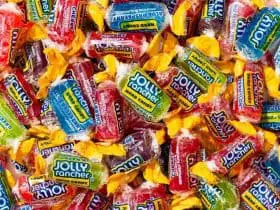
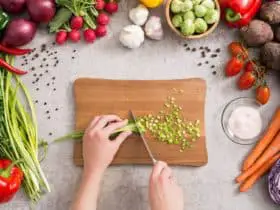


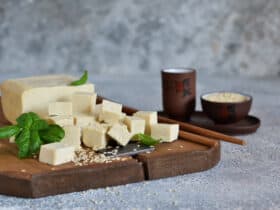
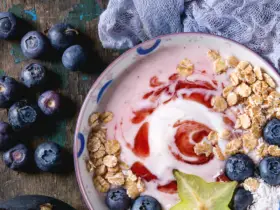
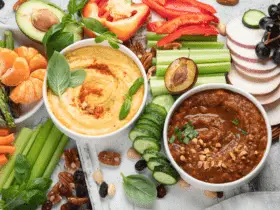
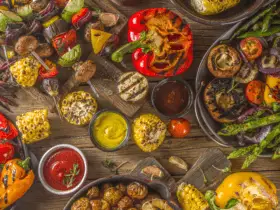
Leave a Reply